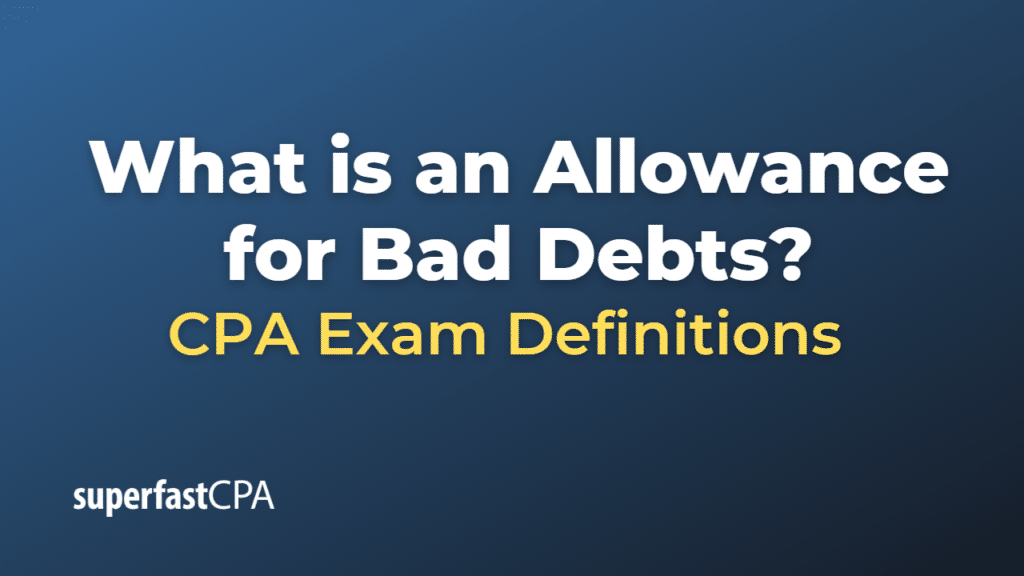Allowance for Bad Debts
An allowance for bad debts, also known as the allowance for doubtful accounts or the allowance for credit losses, is an accounting estimate of the amount of accounts receivable that a company believes it may not be able to collect from its customers. This allowance is created to account for potential future losses due to customer defaults, bankruptcies, or other factors that may prevent customers from paying their outstanding balances.
The allowance for bad debts is a contra asset account, which means it has a credit balance and is reported on the balance sheet as a reduction to the accounts receivable. This method results in a more accurate representation of the net accounts receivable that the company expects to collect.
To record the allowance for bad debts, the following journal entry is made:
- Debit: Bad Debt Expense (Income Statement)
- Credit: Allowance for Bad Debts (Balance Sheet)
As the company identifies specific accounts that are uncollectible, it will write off these accounts by debiting the allowance for bad debts and crediting the accounts receivable. This process does not affect the income statement since the bad debt expense was already recognized when the allowance was initially created.
Example of an Allowance for Bad Debts
Let’s consider a hypothetical example. Company XYZ has $100,000 in accounts receivable, and it estimates that 5% of these receivables may not be collected. Here’s how Company XYZ would record the allowance for bad debts:
- Calculate the bad debt expense: $100,000 (accounts receivable) x 5% (estimated uncollectible percentage) = $5,000.
- Record the journal entry for the bad debt expense:Debit: Bad Debt Expense (Income Statement) $5,000 Credit: Allowance for Bad Debts (Balance Sheet) $5,000
Now, the balance sheet will show accounts receivable of $100,000 and an allowance for bad debts of $5,000. The net accounts receivable that the company expects to collect will be $95,000 ($100,000 – $5,000).
Suppose later, Company XYZ identifies that a specific customer’s receivable of $1,000 is uncollectible. The company would then write off this uncollectible account as follows:
Debit: Allowance for Bad Debts (Balance Sheet) $1,000 Credit: Accounts Receivable (Balance Sheet) $1,000
After this write-off, the remaining balance in the allowance for bad debts account is $4,000 ($5,000 – $1,000), and the net accounts receivable is still $95,000 ($100,000 – $5,000 + $1,000). Note that the income statement remains unaffected by this write-off, as the bad debt expense was already recognized when the allowance was initially created.












